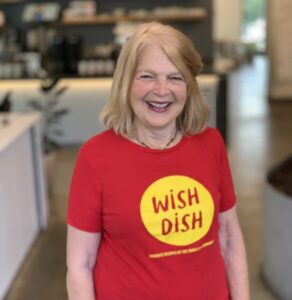
Jose Duarte

Born with a passion for food that he believes is “programmed in his genes,” Peruvian-born chef and owner Jose Duarte moved to Venezuela with his family as a child, but returned to Peru many times in order to maintain and strengthen ties with his family and friends. This family-oriented style is evident in his cooking ands hospitality. It may even be why he named his latest venue – Tambo 22 – after the little huts that lie along the major roads in Peru to welcome travelers and to allow them respire from their weary travels.
After pursuing a degree in tourism in Venezuela, Duarte moved to Florida to study hospitality, management, and of course, food preparation. After marrying his wife Anna who had come from Boston’s, famed Italian neighborhood, known as “The North-End,” Duarte moved to Boston as well so she could keep ties with her own family. It was here in 2000 that he opened his legendary Peruvian-Italian eatery Taranta and soon debuted his famed Gnocchi di Yucca and calzoncini, which represented a fusion of Italian calzones and Latin empanadas
After reading an article about climate change, in 2006, Duarte joined the Green Restaurant Organization and began to undertake a long list of changes that would improve his venue’s environmental impact. Arohd this time, he also opened an eco-lodge in Peru called the Santa Cruz Lodge that serves the same Andean Agave as Tambo22 and may have served at least partially as the inspiration for his Boston-area hospitality spot. He travels regularly across the United States and Peru educating restaurant owners and others about the importance of sustainability and ways to achieve it.
Sourcing locally and sustainably, Duarte is dedicated to bringing the best to his guests, Though Tambo22 was open and shut many times during the pandemic, he is now looking forward to providing a comfortable, delicious, welcoming, and unforgettable place to relax and enjoy his food and hospitality for many years to come!

How did you get into cooking?
I always enjoyed food. Since I was four4 years old, I was fascinated by food markets in Peru. When I was 10, an uncle in Lima invited me to go for lunch to a house where the chef prepared meals only for people he knew. His name is Javier Wong. When we arrived, he pulled out a large “Lenguado” (summer flounder) and asked if we wanted ceviche (raw fish that is “cooked” in citrus acid) ortiradito(Peruvian sashimi) and then a saltado(stir fry) with tausi (fermented black beans). In matter of minutes and right in front of us he transformed the fish into multiple memorable dishes. I had one of those epiphanies realizing that that was one of the coolest things I ever saw and I wanted to do something like that in the future!
Who inspired you?
My grandmother Paulina, Chef Javier Wong, and Chef Jhon Mondone
Where was your first professional kitchen experience and what lessons did you learn that continue to educate how you work in your kitchen today?
My first professional kitchen experience was during a holiday break in Venezuela when I helped an chef with New Year’s eve dinner. That evening, many of the kitchen staff did not show up to work. I was a guest at the hotel and I volunteered to help in the kitchen. One of the lessons that I learned that day is that, if you do a job [that] you enjoyed, and had passion for it, you have to always try to be the best and keep learning.
What have been the biggest challenges you have faced and how have you handled them?
As a chef and owner, one of the biggest challenges has been dealing and adapting with COVID 19. I have used creativity, ingenuity, adaptation, and hard work.
How has your cooking and business style changed and how has the industry changed?
My cooking has changed a bit with the use and implementation of newer techniques such as sous vide. The industry if going through a deep change towards the digital world. We soon will be developing and writing recipes and formulations that can be sold as data for food printing machines for people at home. The future of food is towards a digital era from production to consumption.
What are you most looking forward to this year, in terms of your career?
Travel. I need to travel to keep learning about food and culture.
NEW ENGLAND CEVICHE
Being in New England gives you the opportunity to source really fresh seafood. In order to make a good ceviche, you will need a super-fresh fish. This recipe is basically a traditional Peruvian ceviche but made with New England seafood.
Serves 8-10
Ingredients
½ pound fluke (also known as summer flounder)
½ pound lobster meat cooked
½ pound shucked littleneck clams, or surf or razor clams
½ pound bay scallops, or sea scallops, cut in half
2 red onions, sliced thinly
2 teaspoons aji amarillopaste
2 teaspoons rocotopaste
juice of 20 key limes or 8 regular limes
sea salt
To serve
4 ears boiled corn, cut into rounds
4 boiled sweet potatoes, cut into wedges
Directions
Cut fish into bite-size pieces, and mix fish, clams and scallops together with sliced onions in large bowl.
Rinse onion and seafood in cold water, and drain well.
Season with salt and aji amarillo and rocoto pastes.
Toss fish preparation quickly in lime juice.
Refresh by adding 8-10 ice cubes, mixing well, and then removing the ice before the cubes have a chance to melt.
Serve ceviche immediately in a deep dishes, accompanied by slices of boiled sweet potato and rounds of fresh-cooked corn.
See Matt’s other food-related pieces at www.Matts-Meals.com.
